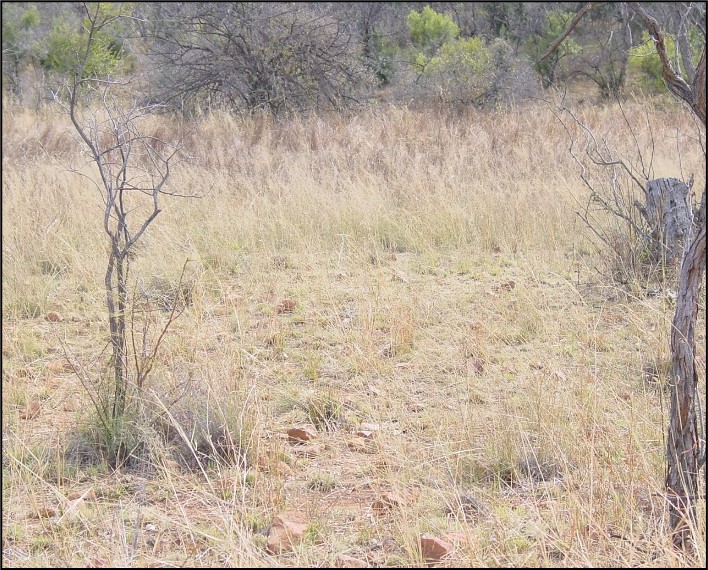Estimated reading time: 6 minutes
Veld grasses can be grouped into three categories: highly palatable – those grasses that are preferred by grazing animals; medium palatable, which animals only utilise when the highly palatable grasses are finished; and unpalatable, which are only grazed when nothing else is available, and which may lead to animals losing weight.
Developmental stages of veld
Depending on grazing strategy and veld management, the veld can be in different stages of development. The pioneer stage is a recovering stage that occurs after veld has been completely overgrazed. Species of grasses and weeds growing here, are called pioneers. These are mostly drought resistant, annual species with varying palatability levels (Table 1).
During the sub-climax stage, bi-annual or perennial species follow the pioneers. Some are semi-palatable and others are palatable. The climax stage includes perennial species that establish later in the development process. These climax species are palatable and make for excellent fodder in good veld.
These stages may also develop in the opposite direction if the veld is overstocked and overgrazed.
Table 1 outlines a few important grass species that grow in different parts of the country. It also shows in which successional stage of veld they will grow, as well as their grazing values. A zero (0) value indicates that the species is unpalatable and not grazed by animals; a ten (10) indicates good palatability and feeding value.
The veld manager should identify the key species in his veld and manage them to prevent overgrazing and avoid permanent damage.

Carrying capacity of veld
Besides grazing, the growth of grasses is also influenced by soil type, climate, and other natural factors (such as palatability) that affect the carrying capacity of the veld.
Figure 1 indicates the veld carrying capacity of different regions in the eastern part of the country. It shows how many hectares are needed to carry a single mature livestock unit (MLU) for a full year. For example, a value of 7-8ha/MLU means that you need 7-8ha to carry one MLU for a year.
Keep in mind that a 450kg cow or bull utilises 10kg of grass per day. At weaning, a calf may be the equivalent of 0,7MLU and six mature sheep are the equivalent of 1MLU. In small-stock farming, the term small-stock unit (SSU) is used, and 6SSU will graze the same kilogram of grass per day as 1MLU.

To apply the correct stocking rate, it is very important to keep the veld and the animals in good condition and maintain a positive economic farming business. Producers sometimes tend to overestimate the potential, vigour and palatability of the veld, which leads to overgrazing. It is therefore important to apply the norms provided in Figure 1.
To avoid overgrazing, the farmer or manager should know the following:
- Which grass species grow on the farm or in the camp.
- The production and availability of these species.
- Which of these species are preferred.
- The quality of these species (for grazers and browsers).
- How many animals can be kept on the farm.
- The grazing capacity.
A veld management expert can be contacted to aid with the aforementioned information.
In Figures 1 and 2, the yellow lines indicate three different rainfall zones. The area on the left-hand side of the map receives an average rainfall of less than 500mm per year. The area in the middle receives 500 to 650mm per year on average, and the area on the right receives more than 650mm annually.

Palatability: Sweet vs sour veld
Apart from carrying capacity, the palatability of grasses is also important in veld management. Palatability is influenced by both genetics and the external factors referred to earlier. Veld in South Africa can therefore be divided into three groups: sweetveld, mixed veld, and sourveld. The three varying palatability regions in the eastern part of the country are shown in Figure 2.
The occurrence of the three different veld types is mainly due to climate (rainfall and temperature), soil type, topography, and management. The density and production of sweetveld is lower than that of sourveld and overgrazing often occurs on sweetveld. There are also a few less palatable species among sweetveld. When animals are kept in a camp for too long, they will also graze the less palatable grasses and overgraze the palatable ones.
Sourveld, on the other hand, has a dense cover and is more resistant to overgrazing. However, sourveld can also be overgrazed with a high stocking density during summer.
Realistic grazing management
Some producers believe that you will achieve maximum animal production (high calving percentage and optimal growth) with a maximum stocking density, thus as many animals as possible. This is not the case, since statistics show that on farms where too many animals are kept (overgrazing), the calving percentage is approximately 45% and even lower.
On farms where a realistic grazing capacity is maintained and where enough grazable material is available, the calving percentage can be as high as 95%. The information in Figures 1 and 2 should therefore be kept in mind and applied to maintain good animal production.
Many farmers make use of cultivated pastures for additional grazing and to build up a fodder bank. This will be discussed in a following article in this series. – Prof Chris Dannhauser
For enquiries, contact Prof Chris Dannhauser on 082 873 4736 or chriswei@vodamail.co.za.










